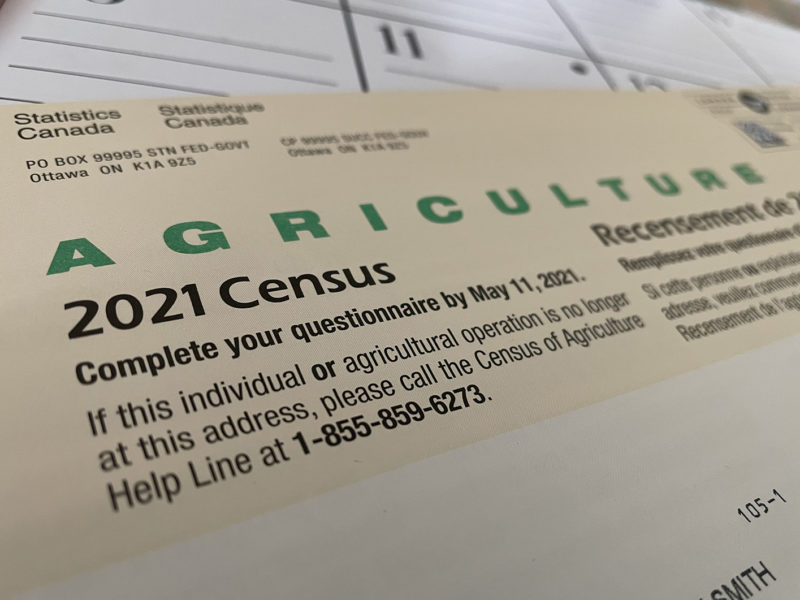Census forms have been landing in mailboxes across the country this week, and for farmers, that means the Census of Agriculture.
The census provides valuable data to all levels of government for tracking the growth and development of the farm sector across the country.
Following consultations with industry in 2017, several questions were developed and added to the 2021 census form “to better identify emerging agricultural products and trends.” Among the emerging categories are hemp, haskaps, kale and ducks.
“The greenhouse and mushroom questions were also expanded to request areas for additional categories, such as greenhouse tomatoes and specialty mushrooms,” adds Statscan. “Further adjustments were additionally made to content related to renewable energy, technology, direct sales, succession planning, and machinery.”
Completing the census is mandatory, and this year’s online form aims to save farmers time.
According to Statistics Canada, a streamlined form promises to reduce the need for Statscan staff to call farm operators. Where calculations are required, the form will do the math automatically. The form also asks the questions that apply specifically to the respondent’s farm.
To save farmers time, Statscan will use “high-quality alternative sources of data, wherever possible.” Canada Revenue Agency data, for example, provides answers to questions about a farm’s operating arrangement, revenues and expenses.
“By drawing on these data, decision makers will act in the interest of farm operators, farm communities and agricultural sectors across Canada,” Statscan explains.
The Census of Agriculture traces its roots back to 1871, and currently takes place every five years. The last census was in 2016.
The first release of data from the 2021 census is scheduled for May 11, 2022.


 Water licence angst
Water licence angst